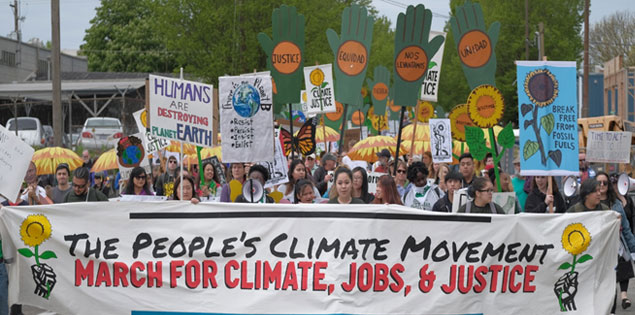Just transition is the idea of a “vison-led economy”, which unifies the set of principles, practices, and processes for global economy transition from “extractive to regenerative” while creating opportunities for social equity and economic prosperity. It is aligned with the Paris Climate agreement, and therefore entails that transition should be towards an environmentally sustainable economy.
The just transition movement was started by labour unions and groups for environmental justice to extend protection to workers that are disproportionately exposed to hazardous pollution and industrial practices. The idea around the movement was to demand and build an economy that is productive, ecologically sustainable, and resilient with appropriate democratic governance systems.
In the evolving landscape, just transition initiatives have facilitated the shift from brown energy to green, democratic energy, and from rampant destructive development to ecosystem restoration thereby creating clean and green jobs and propelling global decarbonization. The Trade Union Development Cooperation Network, for example, provides a platform to address various challenges at the intersection of just transition and SDGs, such as poverty, inequality, safety regulation, social protection to extend and ensure worker rights. All these efforts require a high degree of fund mobilization, around $76-83 billion between 2021-2027 to alleviate the social impact of transition, particularly in the low-income countries that tend to be financially stressed.
As action on climate change gathers momentum, it is essential to incorporate just transition principles into climate negotiations at the local, regional and national levels. This will ensure that the vision of a net-zero or low-carbon economy evolves by including environment and sustainable employment opportunities, which will maximise the associated benefits and minimise the hardship of workers and the community.
Governments need to integrate just transition notions into national plan for achieving the SDGs. This action needs to be driven in sync with other relevant ministries and social partners at the industrial level to ensure decent work conditions. Apart from this, including research and impact evaluation in environmentally sustainable economic and sectoral policies would also further the implementation of just transition initiatives, which can be further enhanced by sharing knowledge and best practices.
- The phasing off of coal in Poland shrunk employment by 75%, which led the government, in conjunction with the local union develop a special privilege in the form of a social package for those who lost their jobs
- Similarly in Egypt, a message of ‘shared sacrifice’ was promoted. This included minimum wage boosts, food stipends and progressive taxation, among other benefits that were meant to meet the urgent need for financial and economic stability
- The just transition bond by Rockefeller Family Fund and Appalachian Fund was aimed to equip communities with resources to reduce dependency on extractive industries, such as those in the coal sector, that are now discontinuing operations
Hence all these measures are directed towards developing complementary policies to ensure vulnerable groups are protected. It calls for the international government agencies to integrate the transition principle with the SDGs.
The pandemic needs to be viewed as an opportunity for just transition and clean economy, especially with civil societies and business leaders converging on ‘green’ recovery and the renewable sector. However, it is a long process requiring assistance and inputs from both government and private sector for policymaking. These efforts require massive investments, particularly in developing nations which suffer the most because of climate impacts, necessitating greener economies to alleviate poverty and simultaneously training the youth and women for skill development.
Bibliography
- https://ec.europa.eu/info/strategy/priorities-2019-2024/european-green-deal/actions-being-taken-eu/just-transition-mechanism_en
- https://www.iisd.org/articles/just-transition-examples
- Just Transition Fund – History
- ADOPTION OF THE PARIS AGREEMENT – Paris Agreement text English (unfccc.int)
- Unions support Solidarity and Just Transition Silesia Declaration – International Trade Union Confederation (ituc-csi.org)
- https://www.youtube.com/watch?v=vAJZaGavWH0
- https://climatejusticealliance.org/just-transition/
- Investing for a just transition – Alliance magazine’
- Just-Transition-Centre-report-just-transition.pdf (oecd.org)

